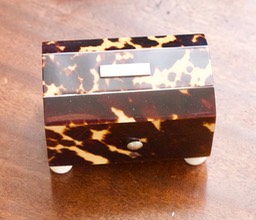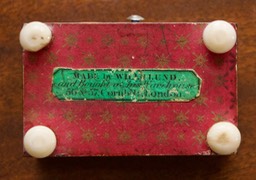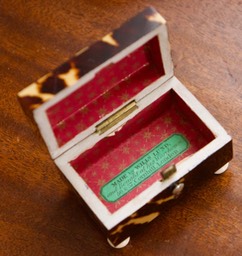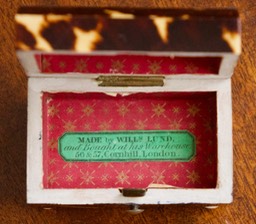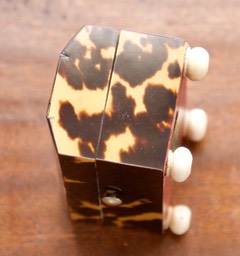a small precious box by william Lund London from : http://www.vintagecorkscrewcenter.com/some-famous-corkscrew-makers/the-story-of-thomas-and-william-lund,-london-16693072
Ivory turning was a very respectful and profitable profession beginning of the 1800 century. " Turning" meant working, not only in ivory, but also soft woods and harder material such as ebony. Hardwood was frequently used for boxes. Thomas Lund started his career making very special boxes e.g vanity boxes. To the right is an example of a Lund label on a box saying " Bought from Thomas Lund at 57 Cornhill, London ".
A vanity box was the ultimate lifestyle accessory in those days. The box contained items necessary for personal grooming.The quality and aesthetics of both the box and its contents established owner elegance and style.
Style and elegance became increasingly important as ladies of the higher social ranks were making long house visits to friends and relatives. These boxes were far from being just a container for bottles. Certainly, the Lund factory also made fascinating wooden drinks cabinets and cigar humidors as well. Mechi of London is another manufacturer that started his business making vanity boxes. He later also diversified into making corkscrews.
Thomas Lund first established his business in 1804 . He moved to 57 Cornhill, London in 1814. His main business at the time besides boxes was manufacturing pens and importing filtering stones for water treatment. His profession was inherited from his father who died 1806. In the monthly magazine from 1806 his father was mentioned as the first ivory turner in York. Logically, Thomas Lund entered the same profession. To the right is a photo of Thomas son William who continued the family tradition.
By 1820 he added a copying machine business to the company. However, this seems not has been his main business. Furthermore, he was probably not making corkscrews at this time. At least not what we know of. He still made various boxes and diversified into making dressing cases. These cases usually included a very small corkscrew. There are known cases from around 1815.
Interestingly the Cornhill shop kept some of the original facade from the 1800 s. An advertisment was present at the very top of the shop. The ad said " An Improved Cork Extractor by the Queen's Patent." Now, did he inherit this sign or did he create it. Nobody knows. Maybe the idea of making corkscrews developed in early days.
William Lund joined his father 1835 and took over the whole business 1845. Unfortunately, there are not many personal records of the Lund family. In fact, there is nothing in the history books.
